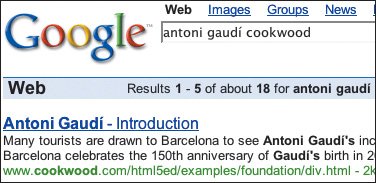Creating a Title
| Each (X)HTML page must have a title element. A title should be short and descriptive. In most browsers, the title appears in the title bar of the window (Figure 3.7). Perhaps even more importantly, the title is used by search indexes like Yahoo and Google as well as in your visitors' browsers' history lists and bookmarks. Figure 3.6. The title element should be placed in the head section. It is required. Figure 3.7. The title of a Web page is shown in the title bar of the window. To create a title:
|
EAN: 2147483647
Pages: 340


 Tips
Tips
